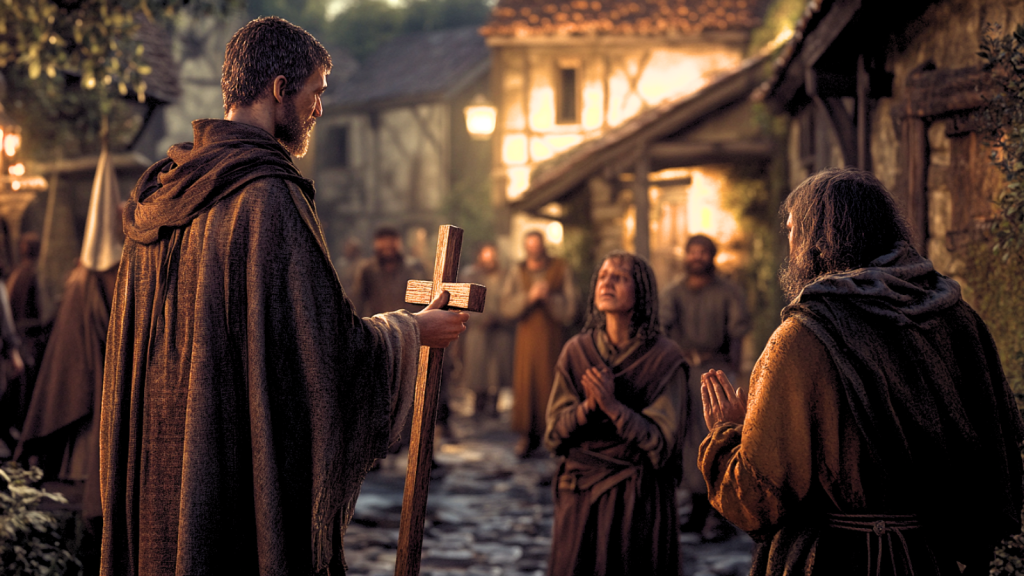The Dark Ages, a period spanning roughly from the 5th to the 10th century, was a time of great change and upheaval in Europe. Far from being a simple era of decline, it was marked by significant events that shaped the continent’s future. These pivotal moments laid the groundwork for many aspects of European culture, politics, and society that we recognise today. From the fall of empires to the rise of new powers, from devastating plagues to groundbreaking inventions, the Dark Ages were anything but dull. Let’s explore 15 key events from this fascinating period that left an indelible mark on European history.
The Fall of Rome

In 476 CE, the last Roman emperor in the West was deposed by Germanic chieftain Odoacer. This event marked the end of the Western Roman Empire and the beginning of the Dark Ages. The power vacuum left by Rome’s collapse led to the emergence of new kingdoms and political structures across Europe. This fragmentation of power ushered in a period of decentralised rule and the development of feudalism in many parts of Western Europe.
The Rise of Byzantium

As the Western Roman Empire crumbled, the Eastern half, known as the Byzantine Empire, flourished. Under Emperor Justinian I in the 6th century, Byzantium reached its greatest extent, reconquering much of the former Western Empire. The Byzantine Empire preserved much of Classical learning and culture, influencing European development for centuries. Its capital, Constantinople, became a major centre of trade and learning, acting as a bridge between Europe and Asia.
The Spread of Christianity
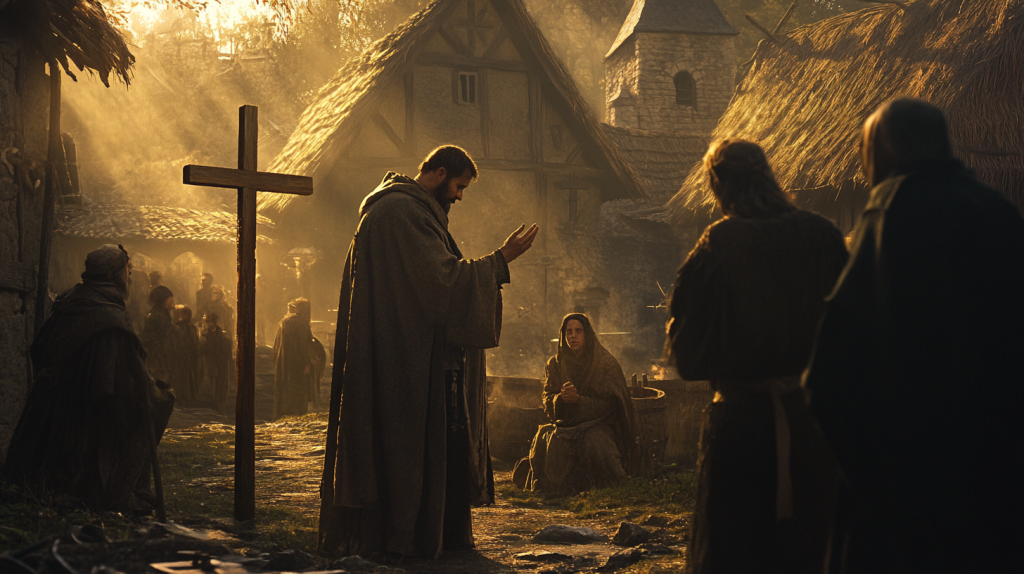
The Dark Ages saw the rapid spread of Christianity across Europe. Missionaries like St. Patrick in Ireland and St. Augustine in England converted pagan kingdoms to the new faith. This religious shift profoundly affected European culture, art, and politics, shaping the continent’s identity for millennia to come. The establishment of monasteries across Europe played a crucial role in preserving knowledge and providing centres of learning during this turbulent period.
The Birth of Islam
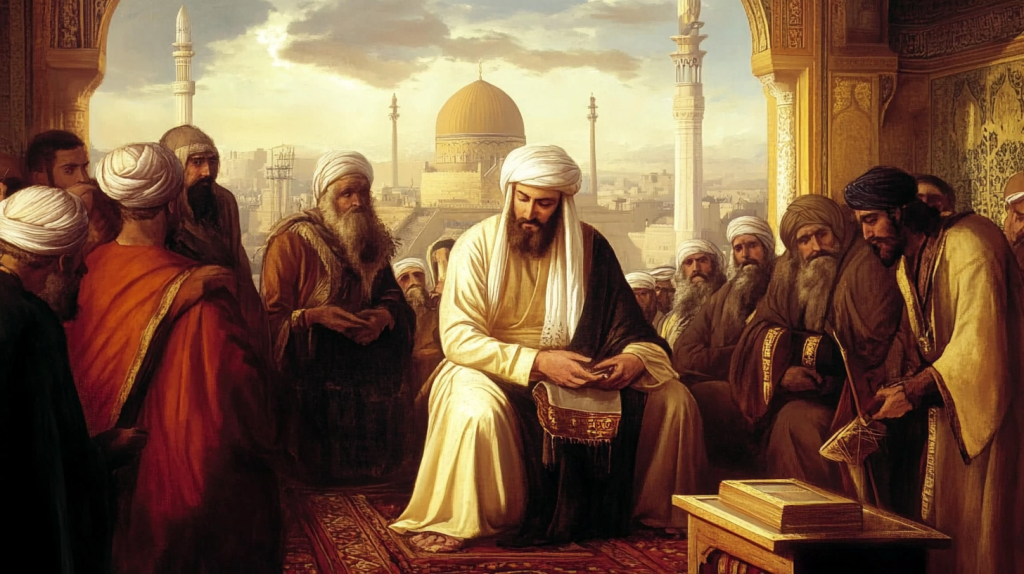
The founding of Islam by Prophet Muhammad in the 7th century had far-reaching effects on Europe. Islamic expansion into the Iberian Peninsula and parts of Southern Italy brought new ideas, technologies, and cultural influences to the continent. The interaction between Islamic and Christian civilisations would shape European history for centuries. Islamic scholars preserved and built upon ancient Greek and Roman knowledge, later reintroducing many texts to Europe during the Renaissance.
The Carolingian Renaissance

Under Charlemagne’s rule in the late 8th and early 9th centuries, a revival of learning and culture took place known as the Carolingian Renaissance. This period saw the standardisation of handwriting, the preservation of classical texts, and educational reforms. These efforts helped preserve knowledge that might otherwise have been lost during the turbulent Dark Ages. The development of the Carolingian minuscule script during this time laid the foundation for modern lowercase letters.
The Viking Age Begins

The late 8th century marked the beginning of the Viking Age, as Norse raiders began to attack coastal settlements across Europe. Their longships allowed them to navigate rivers, leading to widespread exploration and settlement. Viking influence reached from North America to the Byzantine Empire, reshaping European politics and trade. The Vikings also established trade routes that connected Northern Europe with the Middle East and Central Asia, facilitating cultural and economic exchange.
The Treaty of Verdun
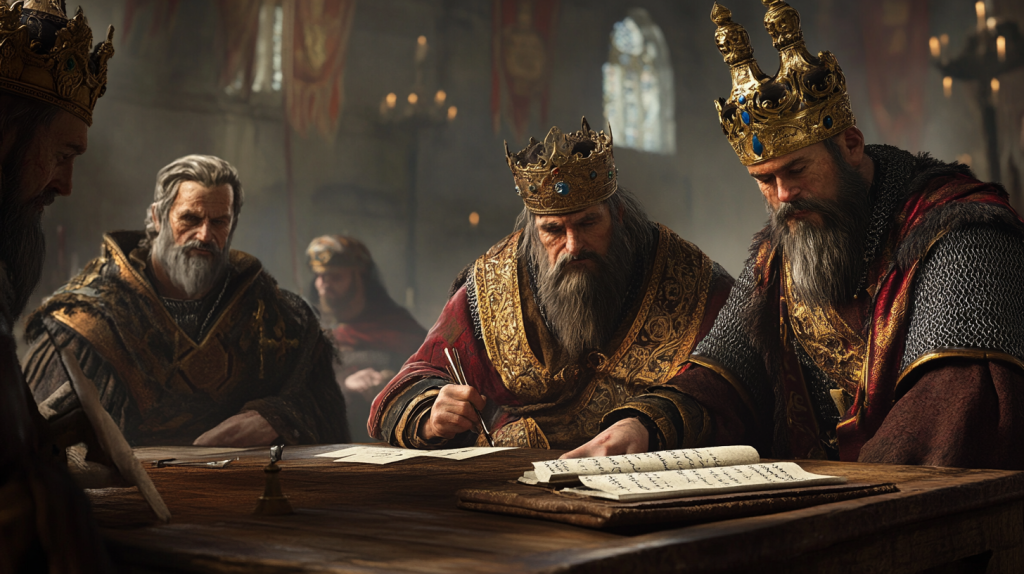
In 843 CE, the Treaty of Verdun divided Charlemagne’s empire among his grandsons. This agreement laid the foundation for the modern nations of France and Germany. The treaty’s impact on European political geography can still be seen in national borders today. It also established the concept of partible inheritance among royal families, which would influence succession practices throughout medieval Europe.
The Invention of the Heavy Plough
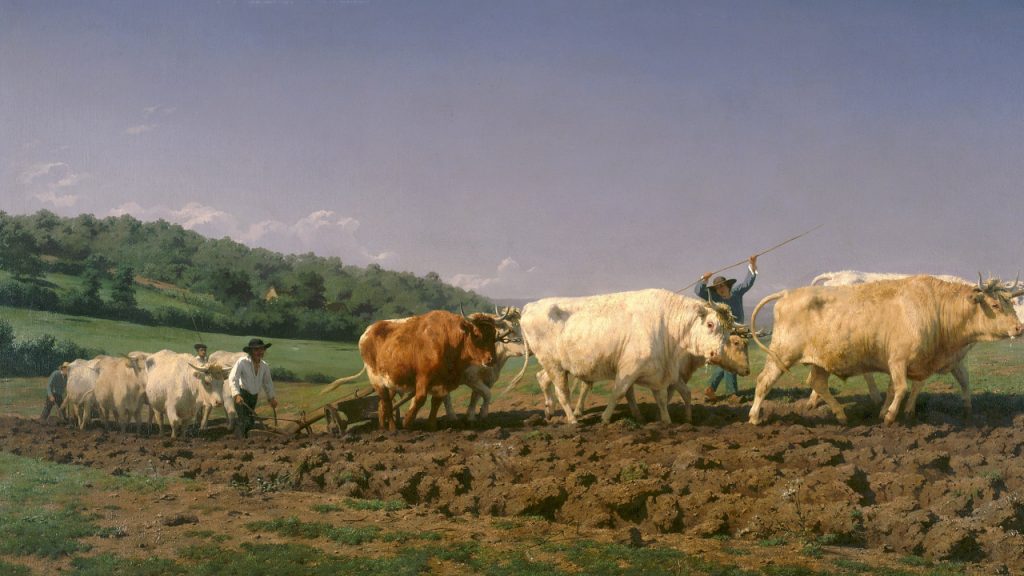
The development of the heavy plough in Northern Europe during the 6th century revolutionised agriculture. This tool allowed farmers to cultivate the rich, heavy soils of Northern Europe more effectively. The resulting agricultural surplus supported population growth and urbanisation, changing the face of European society. This innovation also led to the adoption of the three-field crop rotation system, further increasing agricultural productivity.
The Founding of Kiev

The establishment of Kiev as the capital of the Kievan Rus in 882 CE marked the birth of the first East Slavic state. This event laid the groundwork for the later development of Russia, Ukraine, and Belarus. The Kievan Rus would become a major power in Eastern Europe, influencing trade and politics in the region. The conversion of Vladimir the Great to Christianity in 988 CE further cemented Kiev’s importance and brought the Rus into closer contact with Byzantine culture.
The Battle of Hastings
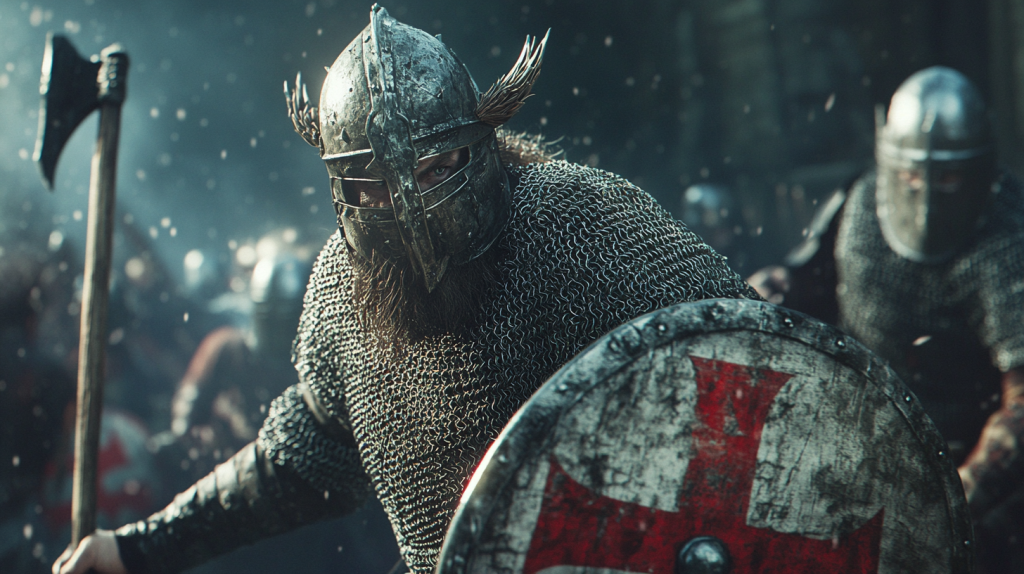
In 1066, William the Conqueror defeated the Anglo-Saxon King Harold at the Battle of Hastings. This Norman conquest of England had profound effects on the island’s language, culture, and political structure. The event marked the end of the Anglo-Saxon era and the beginning of a new chapter in English history. The Norman invasion also introduced feudalism to England and led to the construction of numerous castles, dramatically altering the English landscape.
The First Crusade

Pope Urban II’s call for the First Crusade in 1095 set in motion a series of religious wars that would last for centuries. The Crusades brought increased contact between Western Europe and the Middle East, spurring cultural exchange and trade. These expeditions also had long-lasting effects on relations between Christians and Muslims. The Crusades led to the establishment of new trade routes and the transfer of knowledge in fields such as medicine, mathematics, and philosophy from the Islamic world to Europe.
The Great Schism

The split between the Eastern Orthodox and Roman Catholic churches, formalised in 1054, had been brewing for centuries. This schism created a lasting religious divide in Europe, influencing politics, culture, and society. The effects of this split can still be seen in the religious landscape of Europe today. The schism also contributed to the weakening of the Byzantine Empire, as it could no longer rely on Western support against external threats.
The Magna Carta
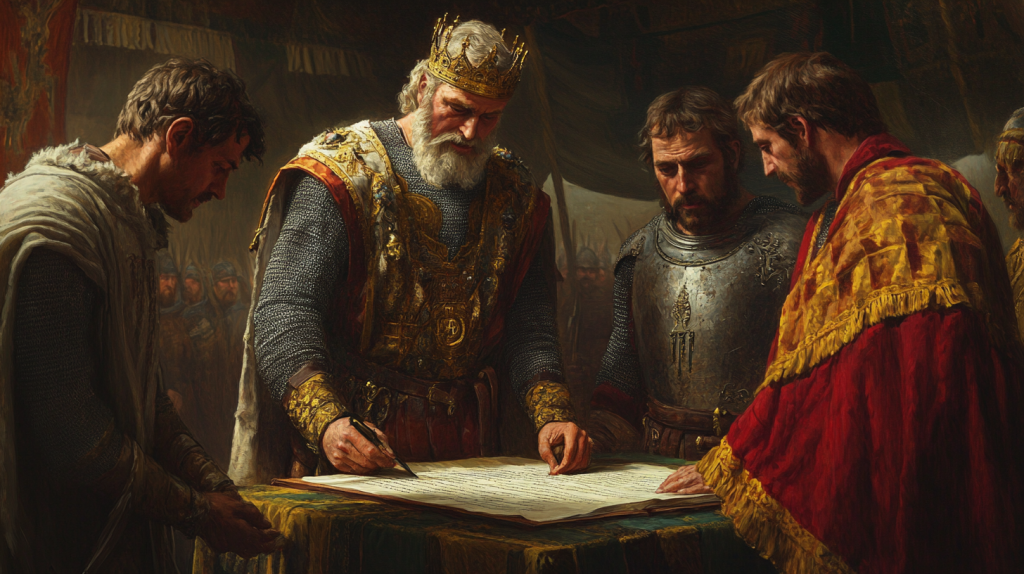
Although signed in 1215, just after the traditional end of the Dark Ages, the Magna Carta had its roots in earlier medieval concepts of law and kingship. This charter limited the power of the English monarchy and established important legal principles. Many of these ideas would later influence the development of constitutional law and human rights. The Magna Carta’s principle that no one, including the king, is above the law became a cornerstone of English common law.
The Arrival of the Black Death

The Black Death, which first struck Europe in 1347, killed an estimated 30-60% of the continent’s population. This devastating plague led to profound social, economic, and cultural changes. The labour shortages that followed contributed to the eventual decline of feudalism and the rise of a money economy. The Black Death also spurred advancements in medicine and public health measures, as societies sought ways to prevent and combat disease.
The Development of the Printing Press

While Johannes Gutenberg’s printing press was invented in 1440, well after the Dark Ages, its development was built on technologies and ideas that had been evolving throughout the medieval period. The spread of printing revolutionised the dissemination of knowledge in Europe, paving the way for the Renaissance and the Reformation. The increased availability of books led to higher literacy rates and the standardisation of languages, contributing to the formation of national identities.
15 Worst British Cars That Were Truly A Nightmare to Own

Ever had a car that seemed more at home in the garage than on the road? You know, one of those vehicles that made every drive feel like a gamble—”Will we make it this time?” If that sounds familiar, you might find an old nemesis (or should I say, chassis?) on this list. Join me on a slightly exasperating, yet nostalgic journey as we revisit some of the most frustratingly unreliable British cars ever made.
Read More: 15 Worst British Cars That Were Truly A Nightmare to Own
16 American Foods Brits Can’t Stand

Food preferences can vary wildly across cultures, and what’s considered a delicacy in one country might be seen as downright bizarre in another. This cultural divide is particularly evident when comparing American and British cuisines. While the two nations share a common language, their tastes in food can be worlds apart. From overly sweet concoctions to processed cheese products, there are certain American foods that many Brits find hard to stomach.
Read More: 16 American Foods Brits Can’t Stand
18 Everyday Things Amish Women Aren’t Allowed to Do

The Amish culture is known for its simple way of life and adherence to traditional values. While this lifestyle may seem appealing to some, there are certain restrictions that Amish women face that most modern women do not. Take a look at these things that we take for granted that are off-limits to Amish women.
Read More: 18 Everyday Things Amish Women Aren’t Allowed to Do
Katy Willis is a writer, master herbalist, master gardener, and certified canine nutritionist who has been writing since 2002. She’s finds joy in learning new and interesting things, and finds history, science, and nature endlessly fascinating.
